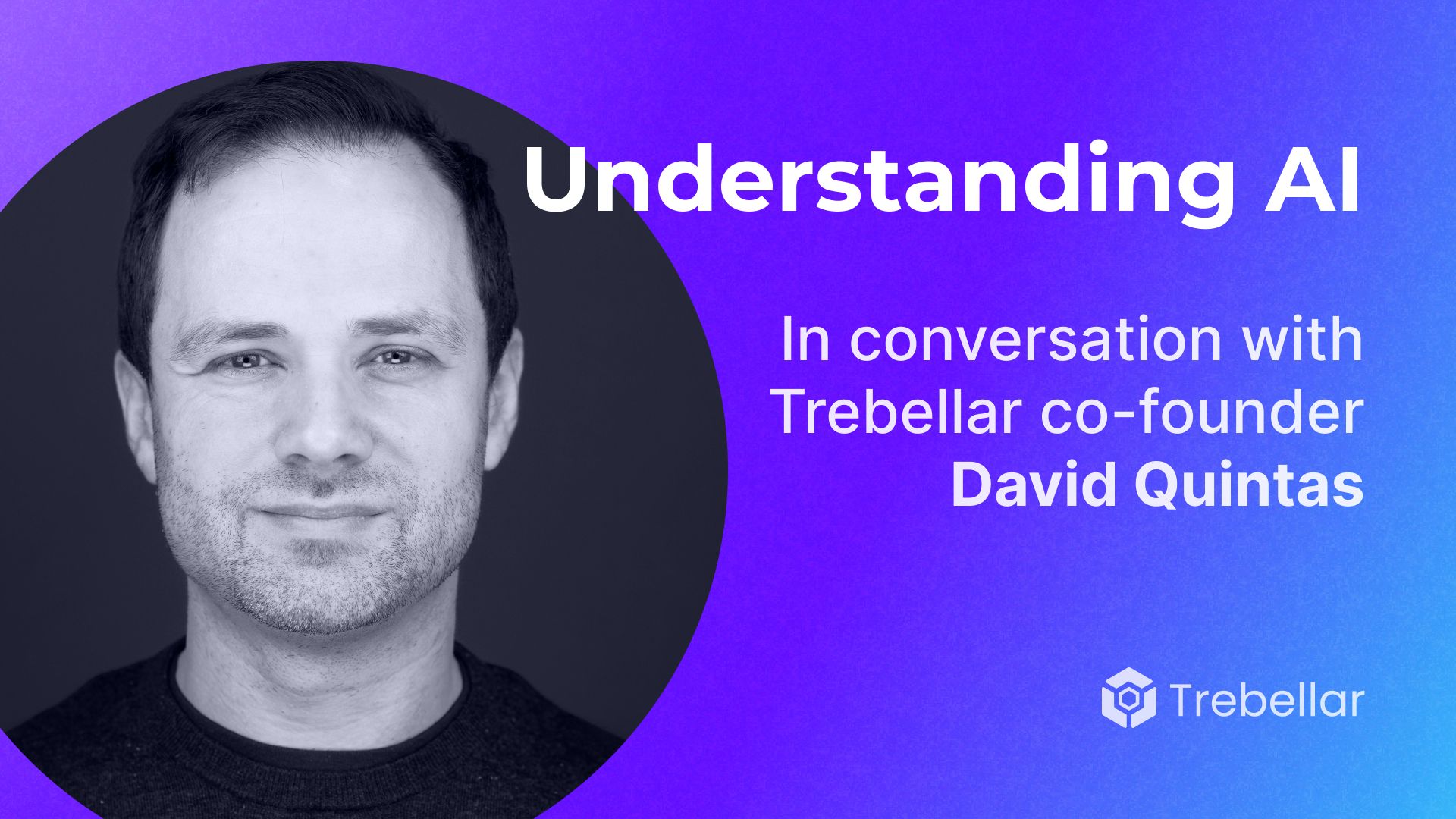Understanding AI: In Conversation with Trebellar Co-Founder David Garcia Quintas
A conversation on AI with our Co-Founder David Quintas.

Artificial Intelligence (AI) is a rapidly evolving field that has captured the attention of both the tech world and the general public. To demystify AI and its implications, we sat down with David, our co-founder, to discuss the fundamentals of AI, the challenges in implementing it, and the future prospects of this technology.
Defining AI
AI is often seen as a buzzword, but understanding its core is crucial. AI is an umbrella term that covers a variety of disciplines and techniques. "The thing with AI is that it's an umbrella term that encompasses a lot of disciplines and a lot of techniques," David explains. At its core, AI learns from data, extracting features and patterns to generate outputs for previously unseen data.
For instance, traditional AI techniques like linear regression involve manually selecting features (area, neighborhood, etc.) to predict outcomes, such as house prices. Modern AI has advanced to include neural networks that can identify features automatically and multi-dimensionally, allowing for more complex and accurate predictions.
Neural Networks and Their Functionality
Neural networks are a fundamental component of AI, mimicking the way the human brain works to process information. David elaborates, "Each neuron is really simple in the brain. It's just activated, not activated. This is the same thing. These neurons are simple. As in they do one thing, and it’s from their interconnection and layered organization that the complex behavior emerges. Again, not unlike in a biological brain."
One of a neural network's greatest strengths is its ability to identify and select relevant features from data automatically. This capability enables AI systems to perform tasks that would be impossible for humans to achieve manually.
Challenges in Implementing AI
One of the significant challenges in AI implementation is that it cannot simply be bolted onto an existing product. Clean, normalized data is essential for AI to function correctly. "Why can't you just bolt on AI to a product? Because some of those things that you needed to do, it's either too much to clean or too much to be normalized after the fact," David notes.
The process of cleaning and normalizing data is complex and must be done from the beginning. Retroactively fitting AI into a system can lead to issues such as inconsistent data, which can hamper the AI's ability to learn and make accurate predictions. "Unless you keep the AI picture in mind from the beginning and keep track of this data in addition to the cleaning, normalization, making it as uniform as possible for the AI to consume, and have an easier time, then you cannot retrofit most of it because some information is already lost.”
Benefits of Native AI Products
Despite these challenges, the benefits of AI-native products are significant. With clean and well-structured data, AI can process and analyze information in real time, providing valuable insights and predictions. "The beauty of AI is that, given the raw data, it can, in real-time, pretty much slice and dice it in a way that answers a lot of questions you may have about it," David says.
Large Language Models (LLMs), a subset of AI, allow for more dynamic interaction with data, enabling users to explore and extract previously hidden insights. Traditional AI methods, like predictive analytics and anomaly detection, continue to be valuable, but LLMs offer a new level of flexibility and depth.
Experience and Adaptability
AI systems, much like humans, gain experience over time. "Experience is a good single-word summary of the advantages of these systems. These AIs, when they're trained, are a distillation of the experience a person would have also accumulated over time. Identifying those patterns is the quintessential defining feature of experience.”
Maintaining clean, well-structured data is crucial for the adaptability of AI systems. This data serves as the foundation that allows AI to evolve and adapt to new challenges and applications. By keeping the basics in good shape, companies can ensure their AI systems remain flexible and effective.
Staying Updated with AI Developments
The rapid pace of AI development can be overwhelming, but David advises patience. "Be patient and wait until the dust settles. Once that settles, the ones that are still around, that people talk about, those are the ones that are worthwhile," he suggests. By focusing on stable, proven technologies, companies can avoid the pitfalls of chasing the latest trends and ensure they are investing in reliable solutions.
AI as a Tool vs. AI as a Replacement
One of the most significant debates surrounding AI is its role as a tool versus its potential to replace human labor. David emphasizes that AI is a powerful tool but not a replacement for human creativity and insight. "You would get replaced for the same reason you would get replaced if you are not flexible, if you cannot adapt to the job, but this is pre-AI and pre-LLMs," he explains. AI systems can augment human capabilities, but they lack the innate creativity and experience that humans bring to the table.
Conclusion
AI is a transformative technology that holds immense potential for various industries. However, its successful implementation requires a deep understanding of its principles, careful planning, and a commitment to maintaining clean and structured data. By leveraging AI as a tool and staying updated with its developments, companies can unlock new levels of efficiency and innovation. If you remember one piece from this interview, it should be this: AI outputs will be as good as the quality of both the AI and, most importantly the quality of the input and training data. AIs won't create good things from out of thin air. Those would be “hallucinations.”

